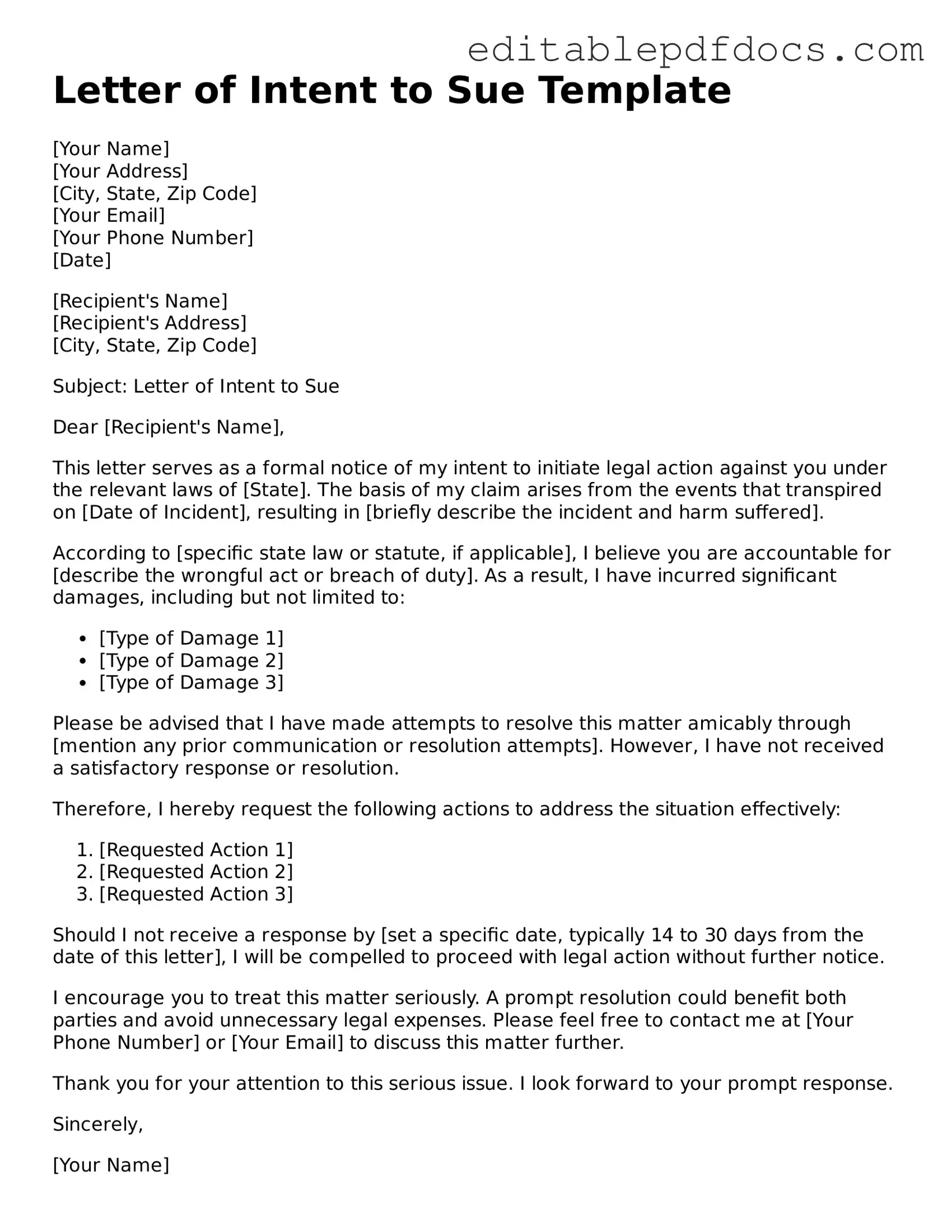The Letter of Intent to Sue form serves as a crucial step for individuals or entities considering legal action. This document outlines the intent to file a lawsuit and typically includes key details such as the parties involved, the nature of the dispute, and the specific grievances being raised. By providing a clear and concise summary of the issues at hand, the form not only communicates the seriousness of the matter but also encourages the opposing party to engage in resolution discussions. It often sets a timeline for response, allowing both sides to consider their options before escalating the situation to court. Additionally, this letter can help establish a record of communication, which may be beneficial if the dispute eventually leads to litigation. Overall, the Letter of Intent to Sue is an essential tool for anyone navigating potential legal challenges, as it lays the groundwork for formal proceedings while promoting dialogue and resolution.
